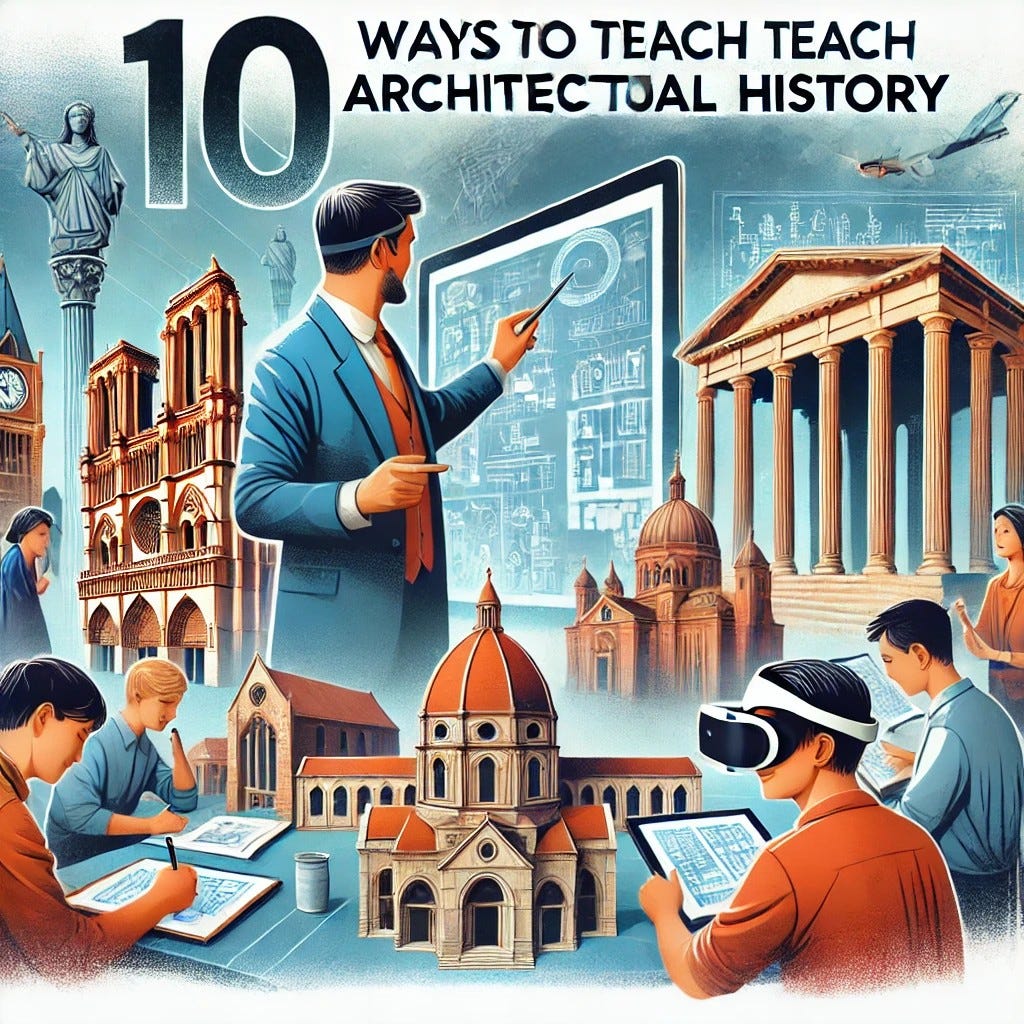10 Ways to Teach History of Architecture Effectively in a 5-Year B.Arch Program
10 innovative methods to teach architectural history
How can we inspire architecture students to see history not just as dates and buildings, but as a treasure trove of ideas that fuel creativity? Teaching the history of architecture in a 5-year B.Arch program requires more than textbooks—it's about storytelling, critical thinking, and bridging past innovations with future designs.
In this article, we’ll explore 10 innovative methods to teach architectural history, the challenges students and faculty face, and practical solutions to transform these challenges into opportunities.
1. Introduce Chronological Learning Modules
Break the curriculum into five thematic years:
Year 1: Prehistoric to Classical Architecture
Year 2: Medieval and Gothic Architecture
Year 3: Renaissance to Industrial Revolution
Year 4: Modernism and Postmodernism
Year 5: Contemporary Global Architecture
This structured approach helps students grasp the evolution of architectural styles and their socio-cultural contexts.
Challenge: Students may feel overwhelmed by the vast scope.
Solution: Use concise timelines, digital tools, and storytelling to simplify complex periods.
2. Incorporate Site Visits and Virtual Tours
Bring history to life by organizing field trips to historical sites and leveraging virtual reality for inaccessible monuments.
Example: Imagine exploring the Parthenon in Athens through VR goggles, followed by a site visit to a local heritage site to draw parallels.
Challenge: Budget constraints and logistical issues.
Solution: Partner with local heritage bodies or cultural organizations for funding and collaboration.
3. Blend Theory with Design Studios
Integrate historical concepts into design assignments.
Example: Ask students to design a contemporary public space inspired by Gothic principles like light and verticality.
Challenge: Balancing academic rigor with creativity.
Solution: Align assignments with historical themes while allowing flexibility in interpretations.
4. Gamify Learning
Use quizzes, role-playing games, and interactive platforms to make history engaging.
Example: A class simulation where students debate as architects from different eras, defending their designs.
Challenge: Time-intensive preparation.
Solution: Use readily available educational resources like Kahoot or Quizizz to simplify implementation.
5. Invite Guest Lectures from Historians and Practitioners
Bring fresh perspectives by inviting experts to discuss how historical knowledge influences modern architecture.
Example: A guest lecture on Bauhaus principles in contemporary furniture design.
Challenge: Scheduling conflicts.
Solution: Record lectures for flexible access and broader reach.
6. Focus on Local Architecture
Encourage students to study indigenous and vernacular styles.
Example: Researching and documenting the architectural heritage of their hometowns.
Challenge: Overemphasis on Western history in standardized curricula.
Solution: Advocate for curriculum reforms that prioritize local context.
7. Leverage Technology
Introduce students to digital tools like SketchUp, AutoCAD, and BIM to reconstruct historical structures virtually.
Example: A project where students recreate a ruined monument digitally to understand its spatial organization.
Challenge: Limited access to advanced software.
Solution: Negotiate student licenses with software companies and use open-source alternatives.
8. Use Case Studies and Comparative Analysis
Teach through real-world examples, comparing ancient architectural solutions with modern interpretations.
Example: How the Roman aqueduct inspired modern water supply systems.
Challenge: Students may struggle with critical analysis.
Solution: Provide guided templates and examples for case study analysis.
9. Encourage Interdisciplinary Collaboration
Partner with departments like history, sociology, and engineering to give students a holistic understanding of architecture's impact on society.
Challenge: Resistance to cross-departmental cooperation.
Solution: Advocate for joint workshops and interdisciplinary projects as pilot programs.
10. Promote Independent Research and Publishing
Motivate students to explore niche areas in architectural history and publish their findings.
Example: Documenting how climate influenced traditional architecture in specific regions.
Challenge: Lack of research mentorship.
Solution: Create a faculty-led mentorship program to guide students in research and publication.
Challenges in Teaching and Learning History of Architecture
For Faculty:
Problem: Striking a balance between theoretical depth and practical application.
Solution: Use case-based teaching and integrate historical insights into design studios.
Problem: Keeping up with new research and teaching methods.
Solution: Regular participation in professional development programs.
For Students:
Problem: Perceived irrelevance of history in contemporary practice.
Solution: Highlight historical influences in modern designs.
Problem: Difficulty in retaining vast historical data.
Solution: Use mnemonic devices, visual aids, and storytelling techniques.
Call to Action
Architecture educators have the power to transform history into a dynamic subject that inspires the next generation of designers. Start implementing these strategies in your classrooms, and share your results with your peers.
If you’re looking for more in-depth guidance, connect with us! Let’s shape the future of architectural education together.
Would you like a more detailed breakdown of any section or additional insights?


